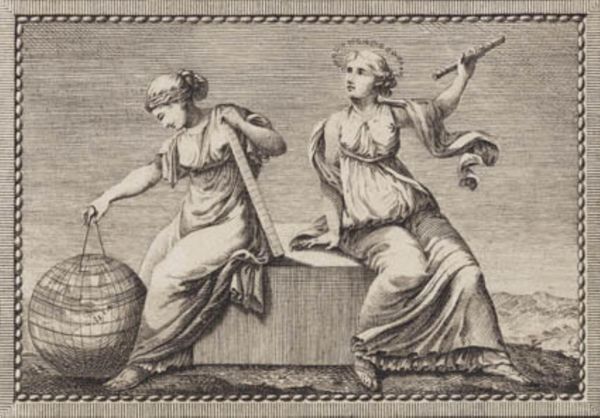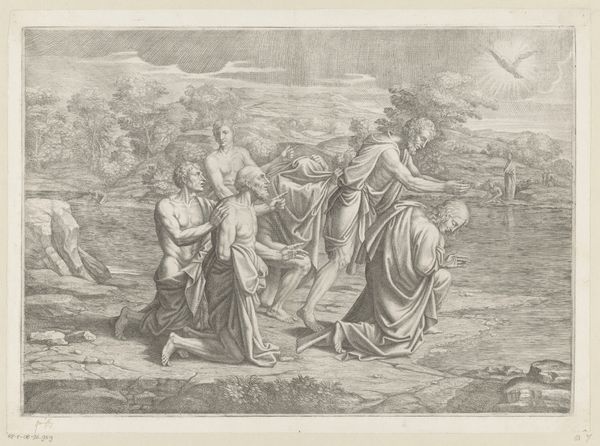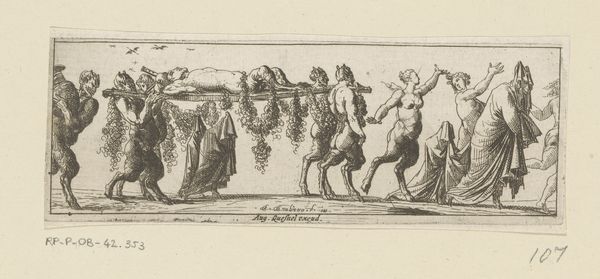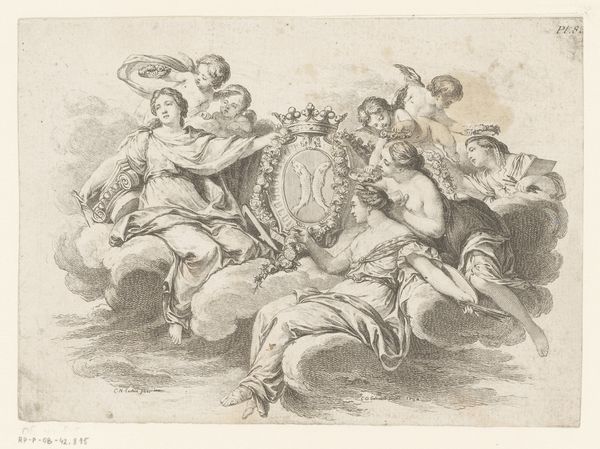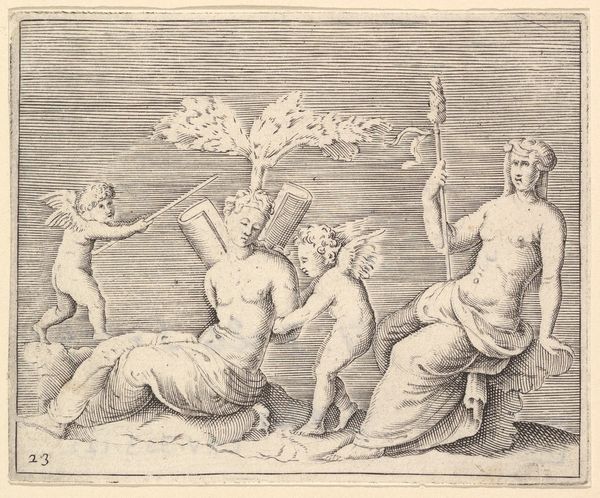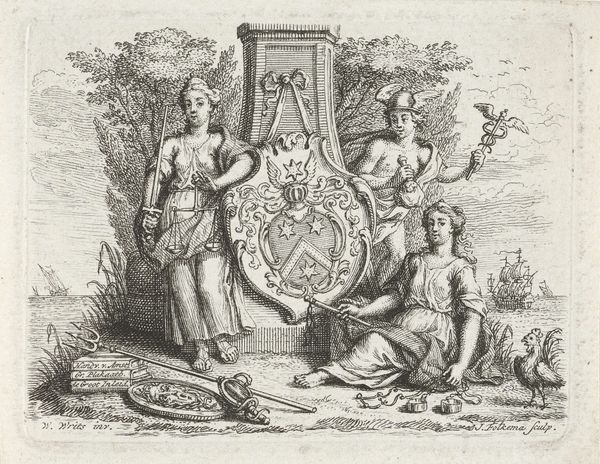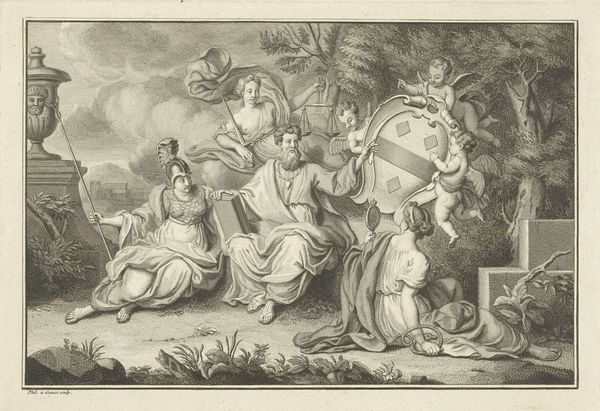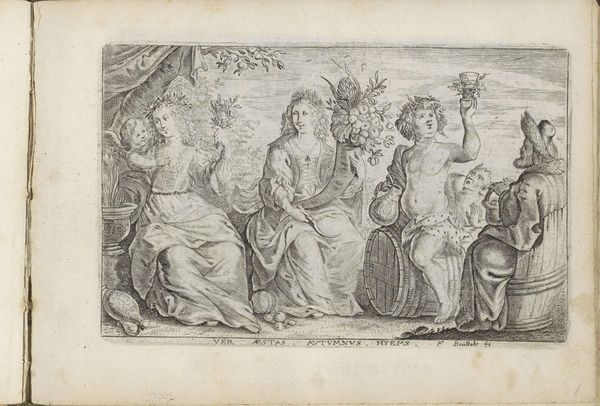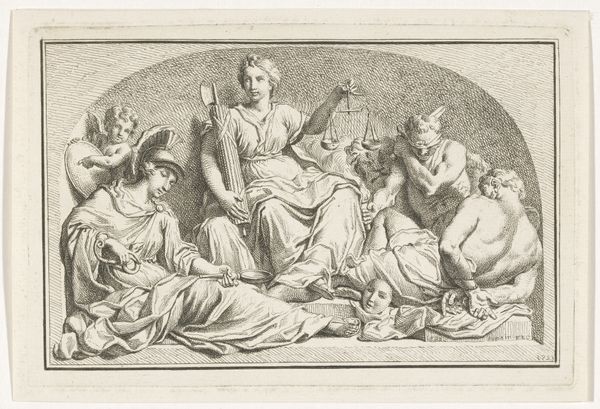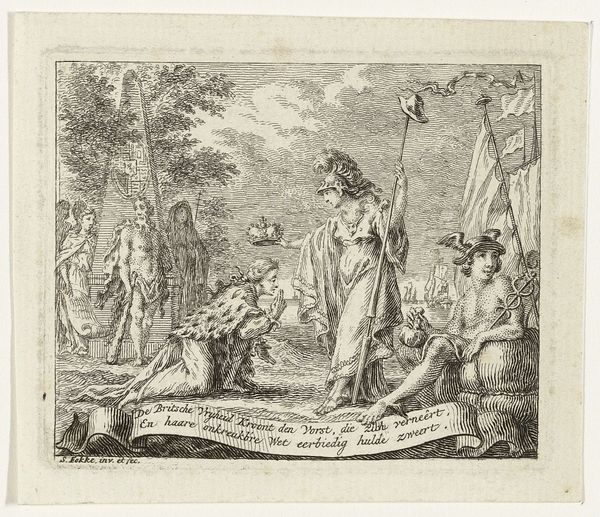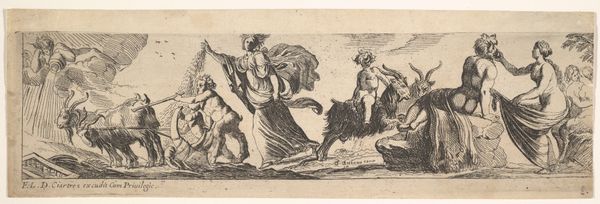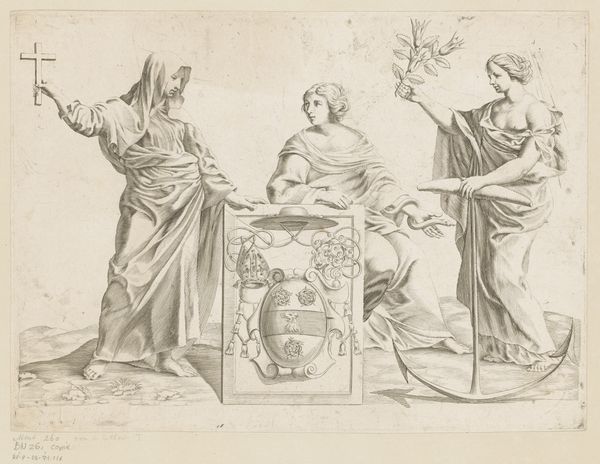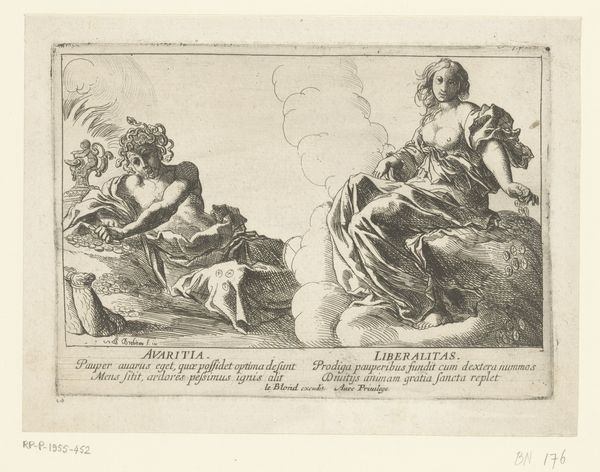
Dimensions: height 89 mm, width 132 mm
Copyright: Rijks Museum: Open Domain
Editor: This is "Meetkunde en Astronomie," or Geometry and Astronomy, a print by Noach van der Meer II, dating from 1751 to 1822. It's an engraving featuring two women, allegorical figures perhaps. What strikes me is the precision of the lines, the detail achieved through engraving, especially on something that looks like a globe. What can you tell me about it? Curator: Look closely at the materials. Engraving allows for mass production; these prints likely circulated widely. Notice how "Geometry," holding the dividers to the globe, embodies Enlightenment ideals, the application of reason and measurement. How does this piece relate to broader changes in manufacturing processes? Editor: So, it's not just about high art, but also about how it was made and who could access it? Curator: Exactly! Think about the labor involved in creating this engraving. The engraver's skill, the paper used, the printing press... all these elements tell a story about the artistic and industrial landscape of the time. The choice of allegory is interesting, isn’t it? Making accessible the burgeoning sciences. The woman to the right with the telescope is Astronomy. Editor: So, considering this print as a commodity changes the way we view it. Curator: Precisely. It was circulated, sold, traded. Consider what owning this print may have meant at the time; and its link to labour and social exchange. Can you think of further ways a materialist lens alters our perspective? Editor: I guess seeing it as more than just a pretty picture helps me appreciate how it connected to society at the time. Curator: It's about moving beyond the aesthetic, focusing on the social and economic conditions of its creation. Editor: This makes me appreciate the historical context so much more! It’s definitely food for thought.
Comments
No comments
Be the first to comment and join the conversation on the ultimate creative platform.
